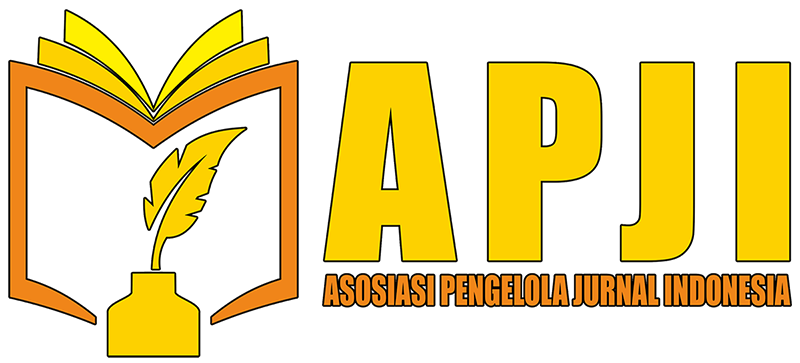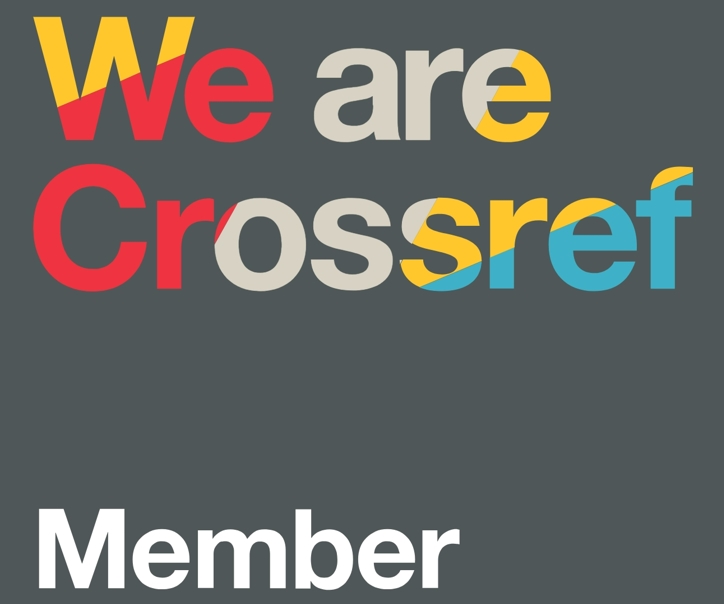Asseessing the Efficacy of Interdiciplinary Curiculum Model in STEM Education: A Review
DOI:
https://doi.org/10.61991/ijeet.v2i2.44Keywords:
Interdisciplinary Curriculum; STEM Education; LearningAbstract
STEM (Science, Technology, Engineering and Maths) education plays an important role in preparing students for the challenges of the 21st century. The interdisciplinary curriculum model, which integrates different STEM disciplines, has been proposed as an effective approach to enhance STEM learning.This research aims to evaluate the effectiveness of the Interdisciplinary Curriculum Model in STEM education through a comprehensive review. A literature search method was used to investigate various interdisciplinary approaches applied in the context of STEM education. The review investigated the benefits, challenges and implementation strategies associated with using interdisciplinary curriculum models in improving students' STEM understanding and skills. The results show that these model can increase students' motivation, engagement, and understanding of STEM concepts. The interdisciplinary model can also help students develop better problem-solving, critical thinking and collaboration skills. However, the effectiveness of the model may vary depending on factors such as implementation, curriculum design, and student characteristics. Further research is needed to identify factors that contribute to the effectiveness of this model and to develop better guidelines for its implementation. Overall, this review highlights the potential of interdisciplinary curriculum models to enhance STEM learning and provides important insights for educators and policymakers considering implementing these models in their schools.
Downloads
References
Aini, Q., & Timur, P.-K. (2023). Implementation of an Independent Curriculum in Supporting Students’ Freedom to Create and Learn. JSRET (Journal of Scientific, Research, Education, and Technology) |, 2(3), 999–1008.
Ak, O., Deni, H., & Gen, H. (2022). European Journal of Education Studies A COURSE CONTENT DESIGNED IN ACCORDANCE WITH THE 5E TEACHING MODEL WITHIN THE SCOPE OF STEM LEARNING APPROACH IN ENVIRONMENTAL EDUCATION COURSE : MY SMART GREENHOUSE. European Journal of Education Studies, 274–295. https://doi.org/10.46827/ejes.v9i4.4263
Darmawansah, D., Hwang, G. J., Chen, M. R. A., & Liang, J. C. (2023). Trends and research foci of robotics-based STEM education: a systematic review from diverse angles based on the technology-based learning model. International Journal of STEM Education, 10(1). https://doi.org/10.1186/s40594-023-00400-3
Darmody, K., Booth, J., O’Toole, F., Alcala, A., Bleach, J., Stynes, P., & Pathak, P. (2022). a Stem Family E-Learning Framework To Increase Family Engagement in Disadvantaged Communities. Proceedings of the International Conference on E-Learning 2022, EL 2022 - Part of the Multi Conference on Computer Science and Information Systems 2022, MCCSIS 2022, 143–148. https://doi.org/10.33965/el2022_202203c018
eyide EROĞLU, O. B. (2021). HIGH S CHOOL S TUDENTS ’ V IEWS ON THE 5E- BASED STEM. Acta Didactica Napocensia, 14(2), 203–215. https://doi.org/10.24193/adn.14.2.15
Fadlelmula, F. K. (2022). STEM learning during the COVID-19 pandemic in Qatar : Secondary school students ’ and teachers ’ perspectives. EURASIA Journal of Mathematics, Science and Technology Education, 18(6), 1–13.
Fitriyana, N., Wiyarsi, A., Pratomo, H., & Marfuatun, M. (2024). LESSON : PERSPECTIVES FROM HIGH SCHOOL AND VOCATIONAL. Ournal of Technology and Science Education, 14(2), 418–437.
Gül, M. D., & Ayık, Z. (2024). Comprehensive science mapping of STEM studies in gifted education. Journal of Turkish Science Education, 21(1), 153–174. https://doi.org/10.36681/tused.2024.009
Hadi, A., Marniati, M., Ngindana, R., Kurdi, M. S., Kurdi, M. S., & Fauziah, F. (2023). New Paradigm of Merdeka Belajar Curriculum in Schools. AL-ISHLAH: Jurnal Pendidikan, 15(2), 1497–1510. https://doi.org/10.35445/alishlah.v15i2.3126
Nurtamam, M. E., Santosa, T. A., Aprilisia, S., Rahman, A., & Suharyat, Y. (2023). Meta-analysis : The Effectiveness of Iot-Based Flipped Learning to Improve Students ’ Problem Solving Abilities. Edumaspul :Jurnal Pendidikan, 7(1), 1491–1501.
Oktaviah, F. N., Dwiyanti, A., Suyadi, & Barumbun, M. (2023). Integrated STEM-based Teaching Modules with the Values of Pancasila Student Profiles in Supporting the Implementation of Kurikulum Merdeka in Primary School. Jurnal Ilmiah Sekolah Dasar, 7(3), 469–480. https://doi.org/10.23887/jisd.v7i3.57198
Putra, M., Rahman, A., Suhayat, Y., Santosa, T. A., & Putra, R. (2023). The Effect of STEM-Based REACT Model on Students ’ Critical Thinking Skills : A Meta-Analysis Study. LITERACY : International Scientific Journals Of Social, Education and Humaniora, 2(1), 207–217.
Quigley, C. F., Herro, D., & Jamil, F. M. (2017). Developing a Conceptual Model of STEAM Teaching Practices. School Science and Mathematics, 117(1–2), 1–12. https://doi.org/10.1111/ssm.12201
Safira, I., Afni, N., Suyuti, M., Purnama, A. D., Wahid, A., Bosowa, U., Makassar, U. I., Agama, I., Muhammadiyah, I., Makassar, U. N., Sulawesi, S., & Author, C. (2021). SCIENCE , Technology , Engineering And Mathematics Based On Blended Learning For Improving Critical Thinking Ability Of. THE 12th INTERNATIONAL CONFERENCE ON LESSON STUDY (ICLS-XII), 97–104.
Safira, N. & I. (2020). Analisis Keterlaksanaan Program Remedial Mata Pelajaran Ipa Smp Berbasis Kurikulum 2013 Di Kota Makassar Analysis Of Remedial Program Implementation In Natural Science Subject Of Secondary Schoolsbased On Curriculum 2013 In Makassar City. Klasikal: Journal of Education, Language Teaching and Science, 2(3), 1–8.
Schijf, J. E., van der Werf, G. P. C., & Jansen, E. P. W. A. (2023). Measuring interdisciplinary understanding in higher education. European Journal of Higher Education, 13(4), 429–447. https://doi.org/10.1080/21568235.2022.2058045
Sellami, A. L., El-Kassem, R. C., Santhosh, M. E., Al-Thani, M. F., & Al Emadi, N. A. (2023). Understanding the Relationship between Students’ Perception of Environmental and Psychological Variables and Their STEM Learning in Qatar: A Structural Equation Modelling Approach. European Journal of STEM Education, 8(1), 1–9. https://doi.org/10.20897/ejsteme/13976
Suharyat, Y., Santosa, T. A., & Satria, E. (2023). The Effectiveness of STEM-Based Learning in Teaching 21 st Century Skills in Generation Z Student in Science Learning : A. Jurnal Penelitian Pendidikan IPA, 9(1), 160–166. https://doi.org/10.29303/jppipa.v9i1.2517
Sung, J. S., & Huang, W. H. D. (2024). Motivational design for inclusive digital learning: Women college engineering students’ motivation for online STEM learning. Contemporary Educational Technology, 16(1), 1–17. https://doi.org/10.30935/cedtech/14047
Turner, R., Cotton, D., Morrison, D., & Kneale, P. (2022). Embedding interdisciplinary learning into the first-year undergraduate curriculum: drivers and barriers in a cross-institutional enhancement project. Teaching in Higher Education. https://doi.org/10.1080/13562517.2022.2056834
Utomo, W., Suryono, W., Santosa, T. A., & Agustina, I. (2023). The Effect of STEAM-Based Hybrid Based Learning Model on Students ’ Critical Thinking Skills. Jurnal Penelitian Pendidikan IPA, 9(9), 742–750. https://doi.org/10.29303/jppipa.v9i9.5147
Vennix, J., Brok, P. Den, & Taconis, R. (2023). Motivation style of K – 12 students attending outreach activities in the STEM field : a person ‑ based approach. Learning Environments Research, 26(1), 129–143. https://doi.org/10.1007/s10984-022-09407-z
Widodo, Y. B., Amri, M., Yustitia, V., Desak, N., & Santi, M. (2024). The Effectiveness of the STEM-based Differentiation Learning Model on Merdeka Curriculum Learning Outcomes. Indonesia Journal of Engineering and Education Technology (IJEET), 2(1), 173–181.
Yang, D., Baldwin, S. J., Using, S. J., Yang, D., & Baldwin, S. J. (2020). Using Technology to Support Student Learning in an Integrated STEM Learning Environment To cite this article : Using Technology to Support Student Learning in an Integrated STEM Learning Environment. International Journal of Technology in Education and Science (IJTES), 4(1), 1–11.
Zulkifli, Z., Satria, E., Supriyadi, A., & Santosa, T. A. (2022). Meta-analysis : The effectiveness of the integrated STEM technology pedagogical content knowledge learning model on the 21st century skills of high school students in the science department. Psychology, Evaluation, and Technology in Educational Research, 5(1), 32–42.
Zulyusri, Festiyed1, Yerimadesi1, Yohandri1, Abdul Razak1, S. (2023). Effectiveness of STEM Learning Based on Design Thiking in Improving Critical Thinking Skills in Science Learning : A. Jurnal Penelitian Pendidikan IPA, 9(6), 112–119. https://doi.org/10.29303/jppipa.v9i6.3709
Downloads
Published
How to Cite
Issue
Section
License
Copyright (c) 2024 Ifa Safira, Dewanto, Suyahman, Everhard Markiano Solissa, Unpris Yastanti

This work is licensed under a Creative Commons Attribution-ShareAlike 4.0 International License.













